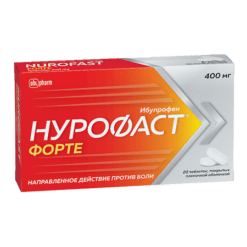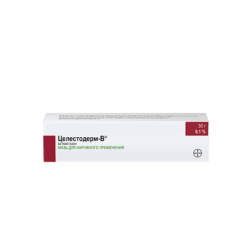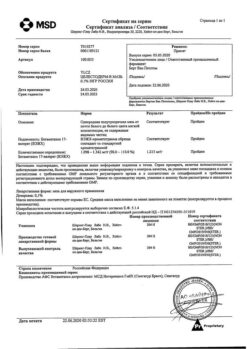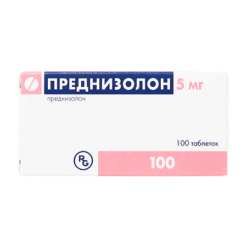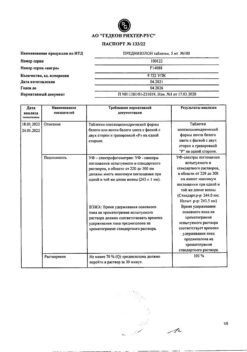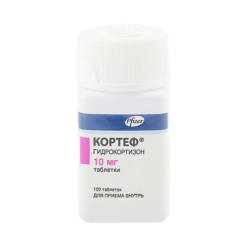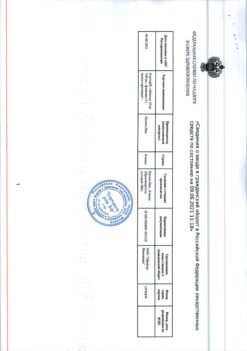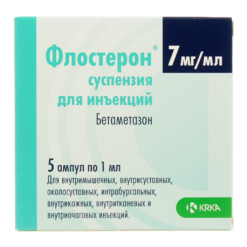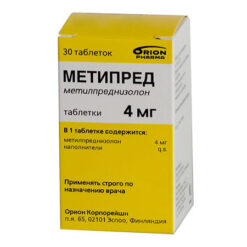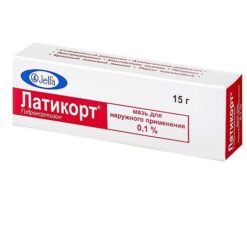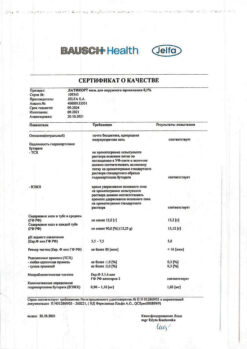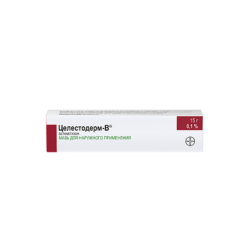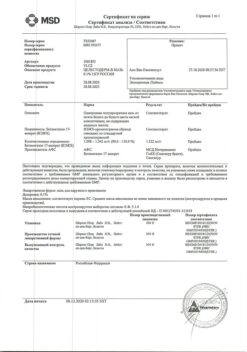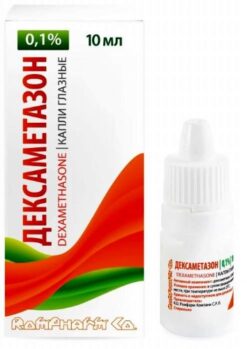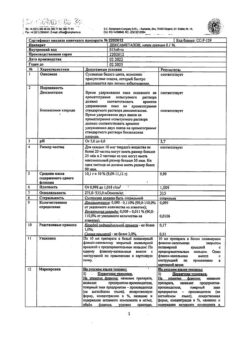No products in the cart.
Nurofast, 200 mg 20 pcs
€4.58 €4.07
Description
Nurofast® is used for headache, migraine, toothache, painful menstruation, neuralgia, back pain, muscle pain, rheumatic pain and joint pain; and fever in influenza and colds.
Indications
Indications
Nurofast®
used for headaches, migraines, toothaches, painful menstruation,
neuralgia, back pain, muscle pain, rheumatic pain and joint pain; A
also in case of fever due to influenza and colds.
Pharmacological effect
Pharmacological effect
Pharmacodynamics
Special instructions
Special instructions
It is recommended to take the drug for the shortest possible course and in the minimum effective dose necessary to eliminate symptoms. If you need to take the drug for more than 10 days, you should consult a doctor.
Active ingredient
Active ingredient
Ibuprofen
Composition
Composition
1 film-coated tablet contains:
active ingredient:
ibuprofen – 200 mg;
excipients:
sodium croscarmellose,
sodium citrate dihydrate,
sodium lauryl sulfate,
colloidal silicon dioxide (Aerosil),
magnesium stearate,
stearic acid;
Excipients for the shell:
Pregnancy
Pregnancy
The use of the drug is contraindicated in the third trimester of pregnancy. You should avoid using the drug in the first and second trimesters of pregnancy; if you need to take the drug, you should consult your doctor.
There is evidence that ibuprofen can pass into breast milk in small quantities without any negative effects on the health of the infant, so usually with short-term use there is no need to stop breastfeeding. If long-term use of the drug is necessary, you should consult a doctor to decide whether to stop breastfeeding for the period of use of the drug.
Contraindications
Contraindications
Hypersensitivity to ibuprofen or any of the components included in the drug.
Complete or incomplete combination of bronchial asthma, recurrent polyposis of the nose and paranasal sinuses and intolerance to acetylsalicylic acid or other NSAIDs (including a history).
Erosive and ulcerative diseases of the gastrointestinal tract (including gastric and duodenal ulcers, Crohn’s disease, ulcerative colitis) or ulcerative bleeding in the active phase or in history (two or more confirmed episodes of peptic ulcer or ulcerative bleeding).
A history of bleeding or perforation of a gastrointestinal ulcer caused by the use of NSAIDs.
Severe heart failure (NYHA class IV – New York Heart Association classification).
Severe liver failure or active liver disease.
Severe renal failure (creatinine clearance <30 ml/min), confirmed hyperkalemia.
Decompensated heart failure; period after coronary artery bypass surgery.
Cerebrovascular or other bleeding.
Hemophilia and other bleeding disorders (including hypocoagulation), hemorrhagic diathesis.
Pregnancy (III trimester).
Children’s age up to 6 years.
With caution
If you have the conditions listed in this section, you should consult a doctor before using the drug.
Concomitant use of other NSAIDs, a history of a single episode of gastric and duodenal ulcers or gastrointestinal ulcerative bleeding; gastritis, enteritis, colitis, the presence of Helicobacter pylori infection, ulcerative colitis; bronchial asthma or allergic diseases in the acute stage or in history – bronchospasm may develop; systemic lupus erythematosus or mixed connective tissue disease (Sharpe’s syndrome) – increased risk of aseptic meningitis; chicken pox; renal failure, including dehydration (creatinine clearance less than 30-60 ml/min), nephrotic syndrome, liver failure, liver cirrhosis with portal hypertension, hyperbilirubinemia, arterial hypertension and/or heart failure, cerebrovascular diseases, blood diseases of unknown etiology (leukopenia and anemia), severe somatic diseases, dyslipidemia/hyperlipidemia, diabetes mellitus, peripheral arterial disease, smoking, frequent alcohol consumption, concomitant use of medications that may increase the risk of ulcers or bleeding, in particular oral corticosteroids (including prednisolone), anticoagulants (including warfarin), selective serotonin reuptake inhibitors (including citalopram, fluoxetine, paroxetine, sertraline) or antiplatelet agents (including acetylsalicylic acid, clopidogrel), pregnancy I-II trimester, breastfeeding period, old age, age under 12 years.
Side Effects
Side Effects
The risk of side effects can be minimized if the drug is taken in a short course, at the minimum effective dose required to eliminate symptoms.
Elderly people experience an increased incidence of adverse reactions with NSAID use, especially gastrointestinal bleeding and perforation, in some cases fatal.
Side effects are predominantly dose-dependent.
The following adverse reactions were observed with short-term use of ibuprofen in doses not exceeding 1200 mg/day (6 tablets).
When treating chronic conditions and with long-term use, other adverse reactions may occur.
The frequency of adverse reactions was assessed based on the following criteria: very common (≥1/10), common (from ≥1/100 to <1/10), uncommon (from ≥1/1000 to <1/100), rare (from ≥1/10000 to <1/1000), very rare (1/10000), frequency unknown (insufficient data to estimate frequency).
Blood and lymphatic system disorders
· Very rare: hematopoietic disorders (anemia, leukopenia, aplastic anemia, hemolytic anemia, thrombocytopenia, pancytopenia, agranulocytosis). The first symptoms of such disorders are fever, sore throat, superficial oral ulcers, flu-like symptoms, severe weakness, nosebleeds and subcutaneous hemorrhages, bleeding and bruising of unknown etiology.
Immune system disorders
Uncommon: hypersensitivity reactions – nonspecific allergic reactions and anaphylactic reactions, reactions from the respiratory tract (bronchial asthma, including its exacerbation, bronchospasm, shortness of breath, dyspnea), skin reactions (itching, urticaria, purpura, Quincke’s edema, exfoliative and bullous dermatoses, including toxic epidermal necrolysis syndrome Lyell), Stevens-Johnson syndrome, erythema multiforme), allergic rhinitis, eosinophilia.
· Very rare: severe hypersensitivity reactions, including swelling of the face, tongue and larynx, shortness of breath, tachycardia, hypotension (anaphylaxis, angioedema or severe anaphylactic shock).
Gastrointestinal disorders
· Uncommon: abdominal pain, nausea, dyspepsia (including heartburn, bloating).
· Rare: diarrhea, flatulence, constipation, vomiting.
· Very rare: peptic ulcer, perforation or gastrointestinal bleeding, melena, hematemesis, in some cases fatal, especially in elderly patients, ulcerative stomatitis, gastritis.
· Frequency unknown: exacerbation of colitis and Crohn’s disease.
Liver and biliary tract disorders
· Very rare: liver dysfunction, increased activity of liver transaminases, hepatitis and jaundice.
Renal and urinary tract disorders
· Very rare: acute renal failure (compensated and decompensated), especially with long-term use, in combination with an increase in the concentration of urea in the blood plasma and the appearance of edema, hematuria and proteinuria, nephritic syndrome, nephrotic syndrome, papillary necrosis, interstitial nephritis, cystitis.
Nervous system disorders
· Uncommon: headache.
· Very rare: aseptic meningitis.
Cardiovascular disorders
· Frequency unknown: heart failure, peripheral edema, with long-term use there is an increased risk of thrombotic complications (for example, myocardial infarction), increased blood pressure.
Disorders of the respiratory system and mediastinal organs
· Frequency unknown: bronchial asthma, bronchospasm, shortness of breath.
Laboratory indicators
hematocrit or hemoglobin (may decrease)
Bleeding time (may increase)
· plasma glucose concentration (may decrease)
Creatinine clearance (may decrease)
Plasma creatinine concentration (may increase)
· activity of “liver” transaminases (may increase)
If side effects occur, you should stop taking the drug and consult a doctor.
Interaction
Interaction
The simultaneous use of ibuprofen with the following drugs should be avoided:
Acetylsalicylic acid: with the exception of low doses of acetylsalicylic acid (no more than 75 mg daily) prescribed by a doctor, since combined use may increase the risk of side effects. With simultaneous use, ibuprofen reduces the anti-inflammatory and antiplatelet effect of acetylsalicylic acid (an increase in the incidence of acute coronary insufficiency in patients receiving small doses of acetylsalicylic acid as an antiplatelet agent is possible after starting ibuprofen).
Other NSAIDs, in particular selective COX-2 inhibitors: the simultaneous use of two or more drugs from the NSAID group should be avoided due to a possible increased risk of side effects.
Use with caution simultaneously with the following medications:
Anticoagulants and thrombolytic drugs: NSAIDs may enhance the effect of anticoagulants, in particular warfarin and thrombolytic drugs.
Antihypertensives (ACE inhibitors and angiotensin II antagonists) and diuretics: NSAIDs may reduce the effectiveness of drugs in these groups. In some patients with impaired renal function (eg, dehydrated patients or elderly patients with impaired renal function), co-administration of ACE inhibitors or angiotensin II antagonists and cyclooxygenase inhibitors may lead to a deterioration of renal function, including the development of acute renal failure (usually reversible). These interactions should be considered in patients taking coxibs concomitantly with ACE inhibitors or angiotensin II antagonists. In this regard, the combined use of the above drugs should be prescribed with caution, especially in the elderly. It is necessary to prevent dehydration in patients, and consider monitoring renal function after initiation of this combination treatment and periodically thereafter.
Diuretics and ACE inhibitors may increase the nephrotoxicity of NSAIDs.
Glucocorticosteroids: increased risk of gastrointestinal ulceration and gastrointestinal bleeding.
Antiplatelet agents and selective serotonin reuptake inhibitors: increased risk of gastrointestinal bleeding.
Cardiac glycosides: simultaneous administration of NSAIDs and cardiac glycosides can lead to worsening heart failure, a decrease in glomerular filtration rate and an increase in the concentration of cardiac glycosides in the blood plasma.
Lithium preparations: there is evidence of the likelihood of an increase in the concentration of lithium in the blood plasma during the use of NSAIDs.
Methotrexate: there is evidence of the likelihood of an increase in the concentration of methotrexate in the blood plasma during the use of NSAIDs.
Cyclosporine: increased risk of nephrotoxicity when NSAIDs are administered concomitantly with cyclosporine.
Mifepristone: NSAIDs should be started no earlier than 8-12 days after taking mifepristone, as NSAIDs may reduce the effectiveness of mifepristone.
Tacrolimus: When NSAIDs are co-administered with tacrolimus, the risk of nephrotoxicity may increase.
Zidovudine: Concomitant use of NSAIDs and zidovudine may result in increased hematotoxicity. There is evidence of an increased risk of hemarthrosis and hematomas in HIV-positive patients with hemophilia who received concomitant treatment with zidovudine and ibuprofen.
Quinolone antibiotics: In patients receiving concomitant treatment with NSAIDs and quinolone antibiotics, the risk of seizures may be increased.
Myelotoxic drugs: increased hematotoxicity.
Cefamandole, cefoperazone, cefotetan, valproic acid, plicamycin: increased incidence of hypoprothrombinemia.
Drugs that block tubular secretion: decreased excretion and increased plasma concentrations of ibuprofen.
Inducers of microsomal oxidation (phenytoin, ethanol, barbiturates, rifampicin, phenylbutazone, tricyclic antidepressants): increased production of hydroxylated active metabolites, increased risk of developing severe intoxications.
Microsomal oxidation inhibitors: reducing the risk of hepatotoxicity.
Oral hypoglycemic drugs and insulin, sulfonylurea derivatives: increased effect of drugs.
Antacids and cholestyramine: decreased absorption.
Uricosuric drugs: decreased effectiveness of drugs.
Estrogens, ethanol: increased risk of side effects.
Caffeine: increased analgesic effect.
Overdose
Overdose
In children, overdose symptoms may occur after taking a dose exceeding 400 mg/kg body weight. In adults, the dose-dependent effect of overdose is less pronounced. The half-life of the drug in case of overdose is 1.5-3 hours.
Storage conditions
Storage conditions
Store at a temperature not exceeding 25 °C.
Shelf life
Shelf life
3 years.
Manufacturer
Manufacturer
Alium JSC, Russia
Additional information
| Shelf life | 3 years. |
|---|---|
| Conditions of storage | Store at the temperature not more than 25 ° C. |
| Manufacturer | Alium JSC, Russia |
| Medication form | pills |
| Brand | Alium JSC |
Other forms…
Related products
Buy Nurofast, 200 mg 20 pcs with delivery to USA, UK, Europe and over 120 other countries.


